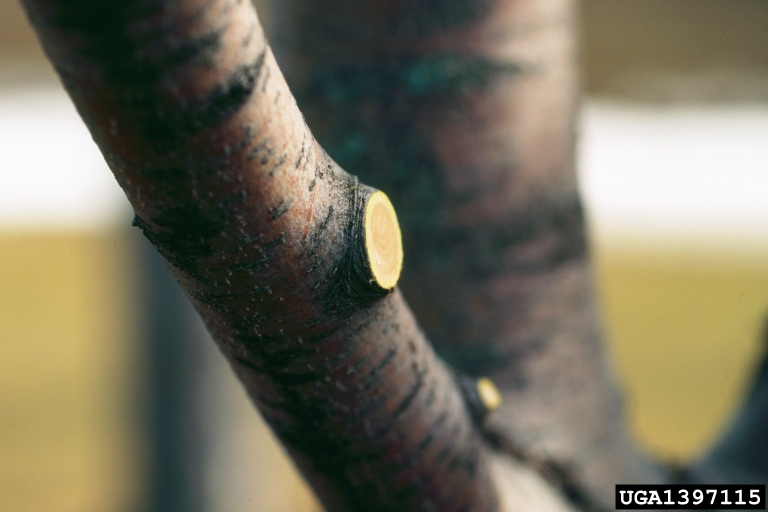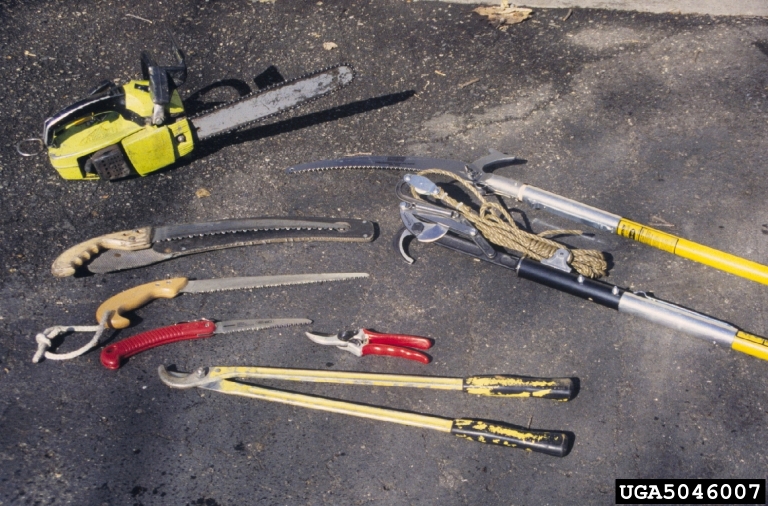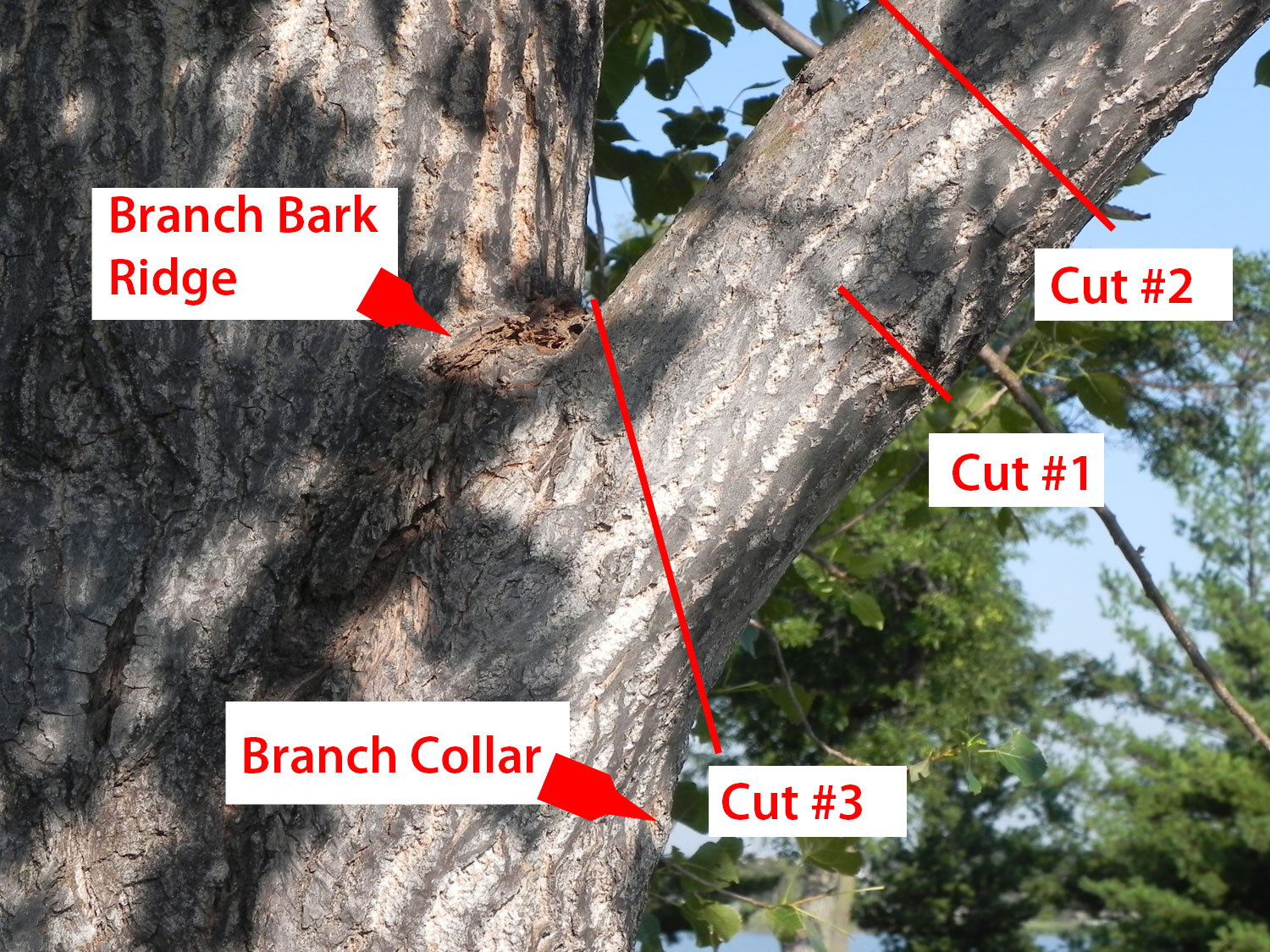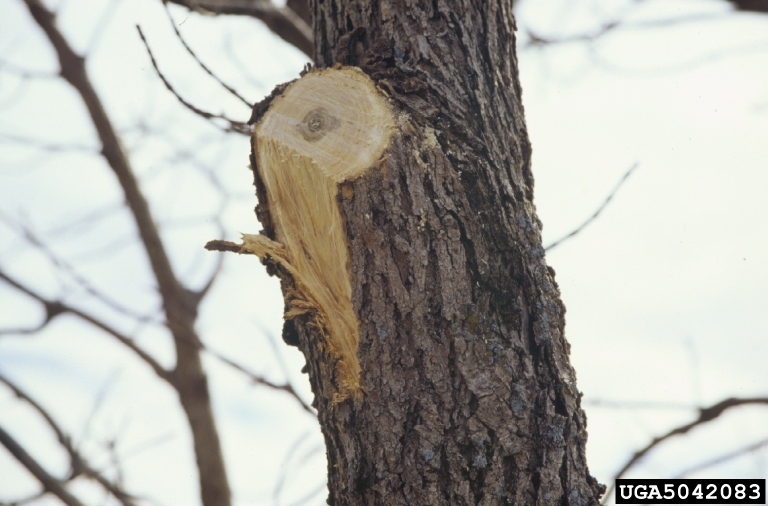
The keys to pruning trees and shrubs are a basic understanding of pruning techniques and knowing when to prune plants. For more information on these topics, check out the additional resources below.
But it's also important to understand the variety of tools available to make the job easier and use them correctly. The best tool for the job is determined by the size of the plant material to be removed and its location.
 Hand Pruners
Hand Pruners
Hand pruners or pruning shears are generally used for cutting branches up to 3/4 inch in diameter. There are two basic types of hand pruners. Scissor-types have curved blades that overlap (scissor action) when making the cut. Anvil-type pruners have a sharpened upper blade which cuts against a flat surface (anvil). Each type is available in different sizes.
Generally, scissor-type hand pruners are preferred over the anvil-types. Sharp, properly used scissor-type pruners make close, clean cuts. Anvil-types can't cut as close as scissor-types and are more likely to crush stems when pruning.
Attempts to prune branches larger than 3/4 inch in diameter with hand pruners often results in torn, jagged pruning cuts and may damage the pruning shears.
Pole pruners make it easier to reach higher in a tree and can be used to cut larger branches up to 2 inches in diameter. Pole pruners consist of a stationary hook and hinged blade operated by a rope and mounted on a long wooden or fiberglass pole.
Loppers
Lopping shears, sometimes called secateurs, consist of blades attached to long handles, and are available in both bypass and anvil styles. The long handles give the gardener greater leverage so cuts can be made through larger branches. Lopping shears are also excellent for pruning difficult-to-reach places.
Additional features to look for include telescoping handles and ratcheting, geared or compound mechanisms. Models with telescopic handles can be extended to reach even higher into the plant. Ratcheting loppers make cuts in several steps. As the handles are compressed, the ratcheting mechanism holds the blades in place, enabling the gardener to release then squeeze again. Ever-increasing pressure is held on the branch until the final cut is made.
Compound loppers have a pivot-arm mechanism with amplifies the cutting force applied by the gardener. Geared loppers also increase the gardener's cutting power, but utilize a geared mechanism. Both geared and compound loppers typically remove a branch in one cut.
Branches from 3/4 to 1 1/2 inches in diameter can be effectively cut with lopping shears.
 Pruning Saws
Pruning Saws
Use a pruning saw on branches larger than 1 3/4 inches in diameter. Various types of pruning saws are available, including hand saws and pole saws.
Small tree branches that are hard to reach from the ground can be pruned with a pole saw or pole pruner. A pole saw is essentially a saw blade attached to a long pole. Both pole saws and pole pruners can be used to cut branches up to 2 inches in diameter.
Chain saws are often used by professional arborists when cutting large tree branches. Chain saws, however, can be extremely dangerous to individuals with little experience or skill operating these machines. To reduce the risk of injury, home gardeners should use pruning saws rather than chain saws when pruning trees.
When removing branches with a saw, use the 3-cut method to prevent ripping bark and damaging the tree.
In potentially hazardous situations, such as the pruning of large branches high in the tree or limbs near power lines, always contact a trained arborist!
 Hedge Shears
Hedge Shears
Another tool sometimes used by the home gardener is the hedge shears. Hedge shears (manual or electric) are used to shear formal hedges to a definite size and shape. They should not be used to prune trees and shrubs.
When buying pruning equipment, choose high quality tools. Although high-quality tools are not inexpensive, if they are used and cared for properly, they will perform better and far outlast the poor quality, less expensive choices.
For more information on pruning techniques and timing, check out the resources below.
- Spring Pruning – Questions & Answers
- Pruning Fruit Trees vs. Shade Trees
- Pruning Established Fruit Trees
Images
- Feature image - A well-done pruning cut on a small branch. Joseph O'Brien, USDA Forest Service, Bugwood.org.
- Choose the right pruning tool for the job, based on the location and size of the branch to be removed. Joseph O'Brien, USDA Forest Service, Bugwood.org.
- When removing branches with a saw, use the 3-cut method to prevent ripping bark and damaging the tree. Sarah Browning, Nebraska Extension.
- Poor pruning techniques used when removing this branch resulted in bark damage. Joseph O'Brien, USDA Forest Service, Bugwood.org.